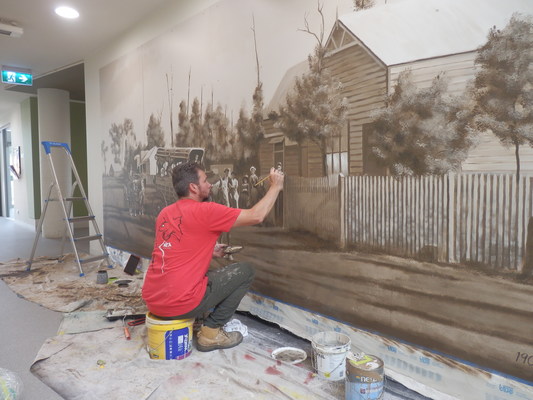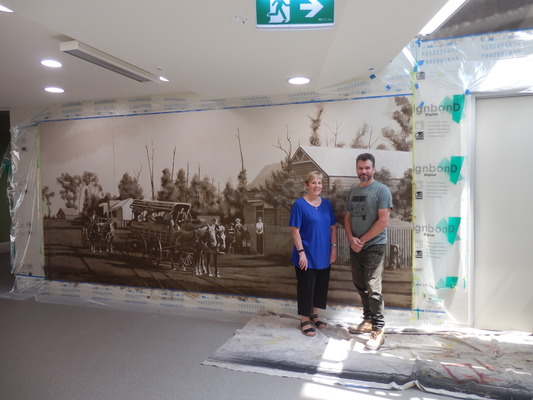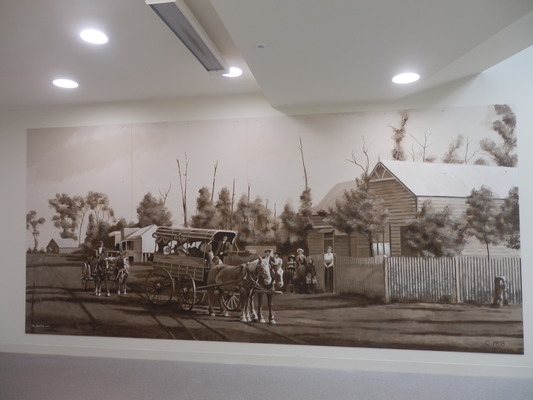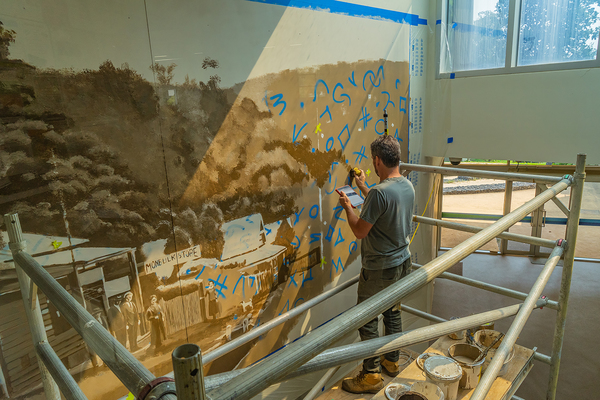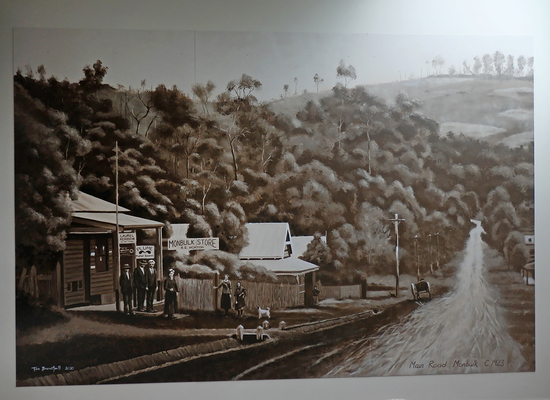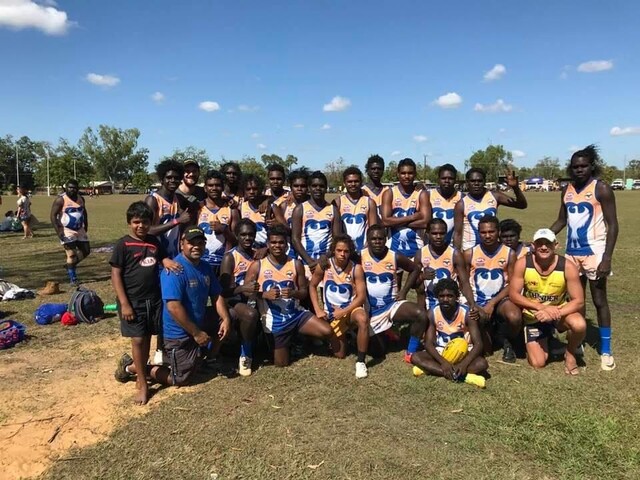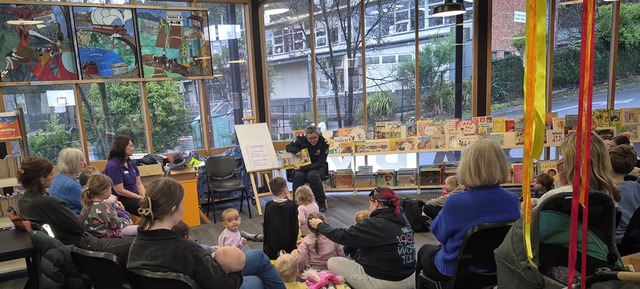The Monbulk Historical Society hopes the development of two new murals in the heart of town provide a chance to give back to the community.
The society recently commissioned acclaimed silo artist Tim Bowtell to paint two murals of early Monbulk in the Monbulk Community Hub.
The historical society’s president Jill A’Vard said the murals were developed in appreciation of the community’s support during the book launch of When Roads Were Tracks.
“We had lots of local business and people and groups donate money to help us print the book,” she said.
“We’re on our third print run now.
“It was so successful that we wanted to give back to the community.”
When Roads Were Tracks was launched by the Monbulk Historical Society in April last year.
Along with its publishing success, the book also earned the Local History Project Award at the Victorian Community History Awards.
The book tells the story of the roads in the Dandenong Ranges and was described by the judges as a ‘colourful publication that documents the history of the roads in the Dandenongs’.
The two murals are of early Main Street Monbulk scenes.
One mural depicts Main Road Monbulk in 1923. It features Olinda Hill in the background, the Monbulk Store, and some local residents.
The second mural shows Robert Nation’s coach outside the Monbulk Post Office at Siddle’s Corner in 1908.
Jill said she wanted Mr Bowtell to create the murals as she knew he was a beautiful artist that would help bring historic photos to life.
She said she was extremely pleased with the end result.
“They look absolutely fabulous,” Jill said.
“Everybody is just amazed at the likeness of the photo.
“It’s just amazing he’s such a talented man.”
The murals are on display in the Monbulk Community Hub and can be viewed by the public.
Visitors can find out more about the history of Monbulk when visiting the murals, with the Monbulk Historical Society located in the same building.

